Fiery red staghorn sumac (Rhus typhina) brighten the Quarry Lands on a mild fall afternoon. © BCP 2010
I was planning on exploring Sun Valley today, but just plain ran out of time after doing all the things that absolutely had to be done. So, rather than not get in any walk at all, I decided to take a gander through the Quarry Lands, close to where I was doing my odd jobs. (For a map, click here.)
Good call! It was a lovely afternoon and for the first half hour or so I mostly had the huge acreage (49 acres, actually, according to the City of Toronto’s planning information) to myself. Then the dog walkers came out to enjoy the late afternoon, and I had a bit more company.
It has probably been a month since I last walked these lands and in that time much has happened. The thousands of spiders and their webs that I saw then have all disappeared, the dragonflies are long gone, and the riot of flowers in the meadow has been tamped down. The colours throughout the field now are generally more subdued, but there remain bursts of colour here and there.
The best colour today? Undoubtedly the staghorn sumacs (Rhus typhina), arising in small stands throughout the meadow. Absolutely stunning in their intense scarlet and gold hues.
Albert Camus said “Autumn is a second spring when every leaf is a flower.
I wonder if he was thinking about sumac when he wrote that.
The leaves of the staghorn sumac glow in the late afternoon light at the Quarry. © BCP 2010
© BCP 2010


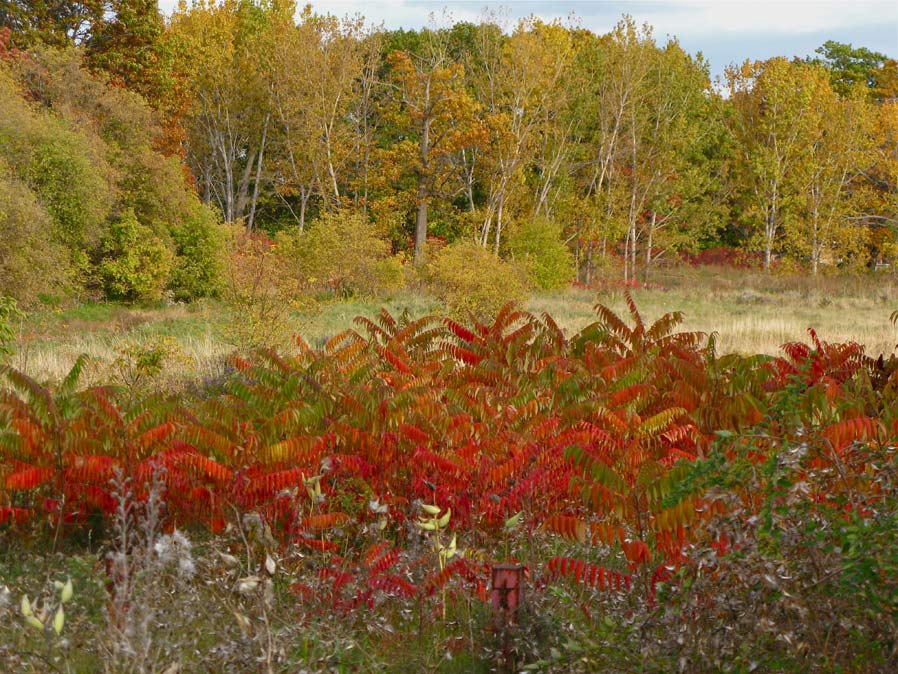
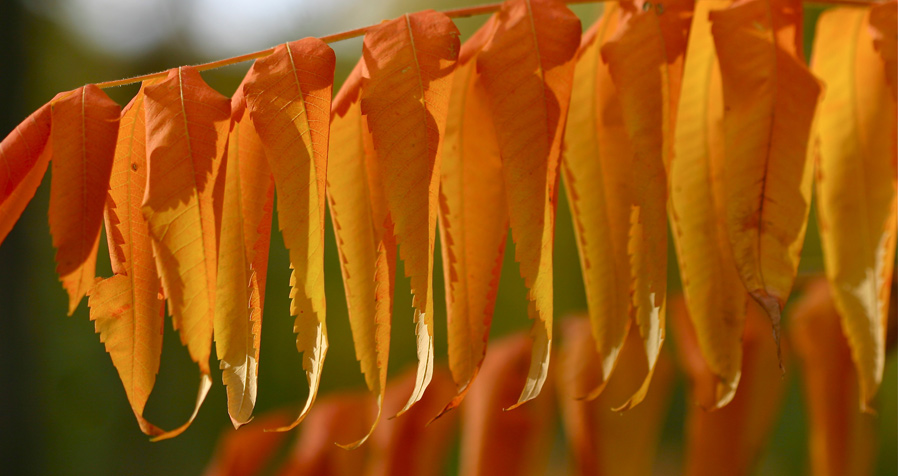
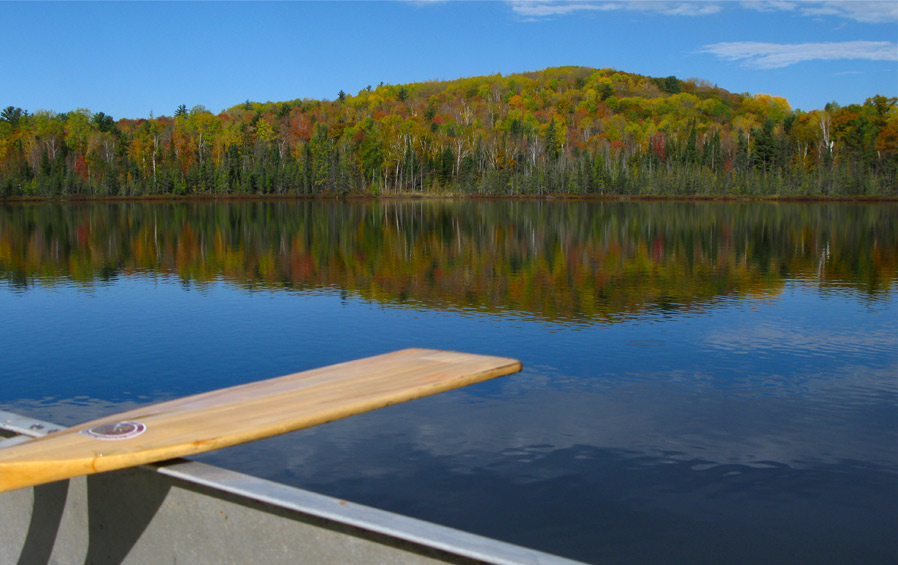
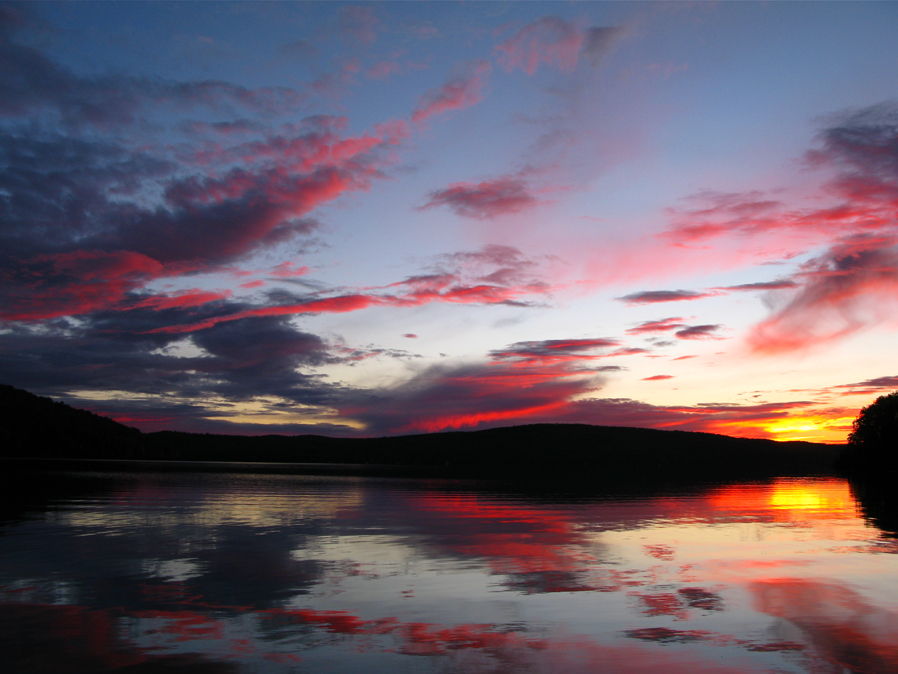
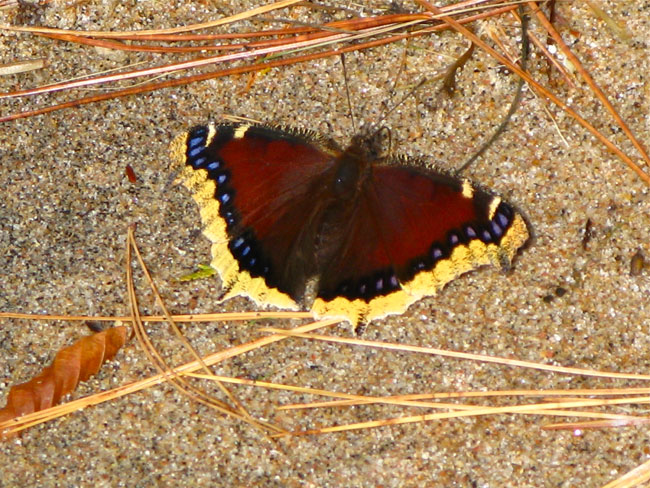
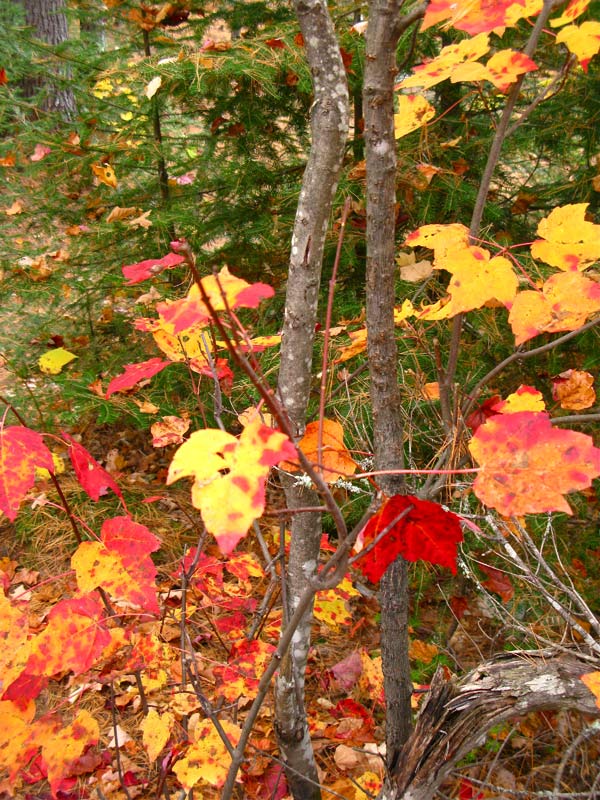
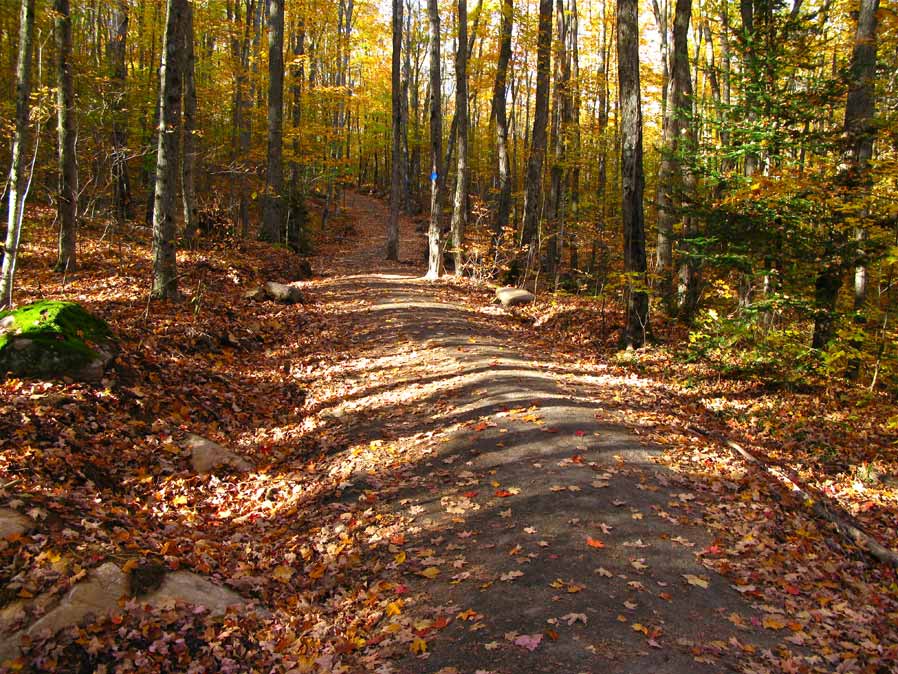
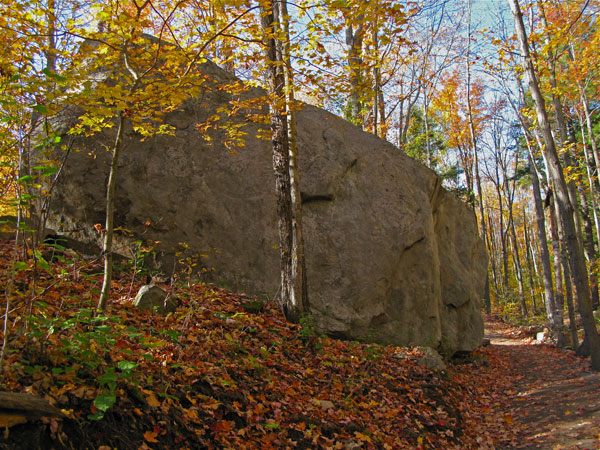
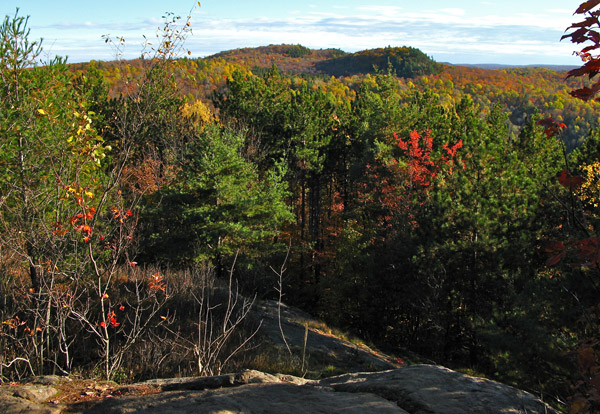
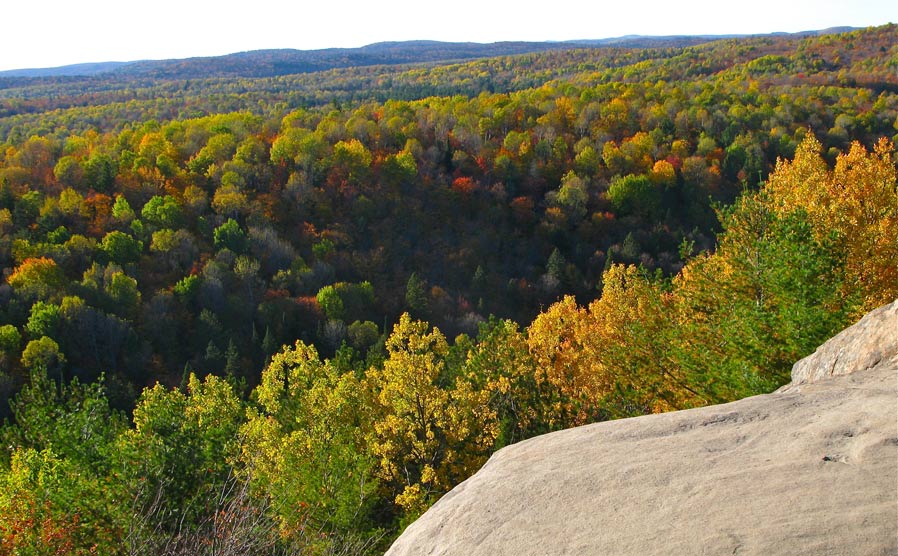

no comments